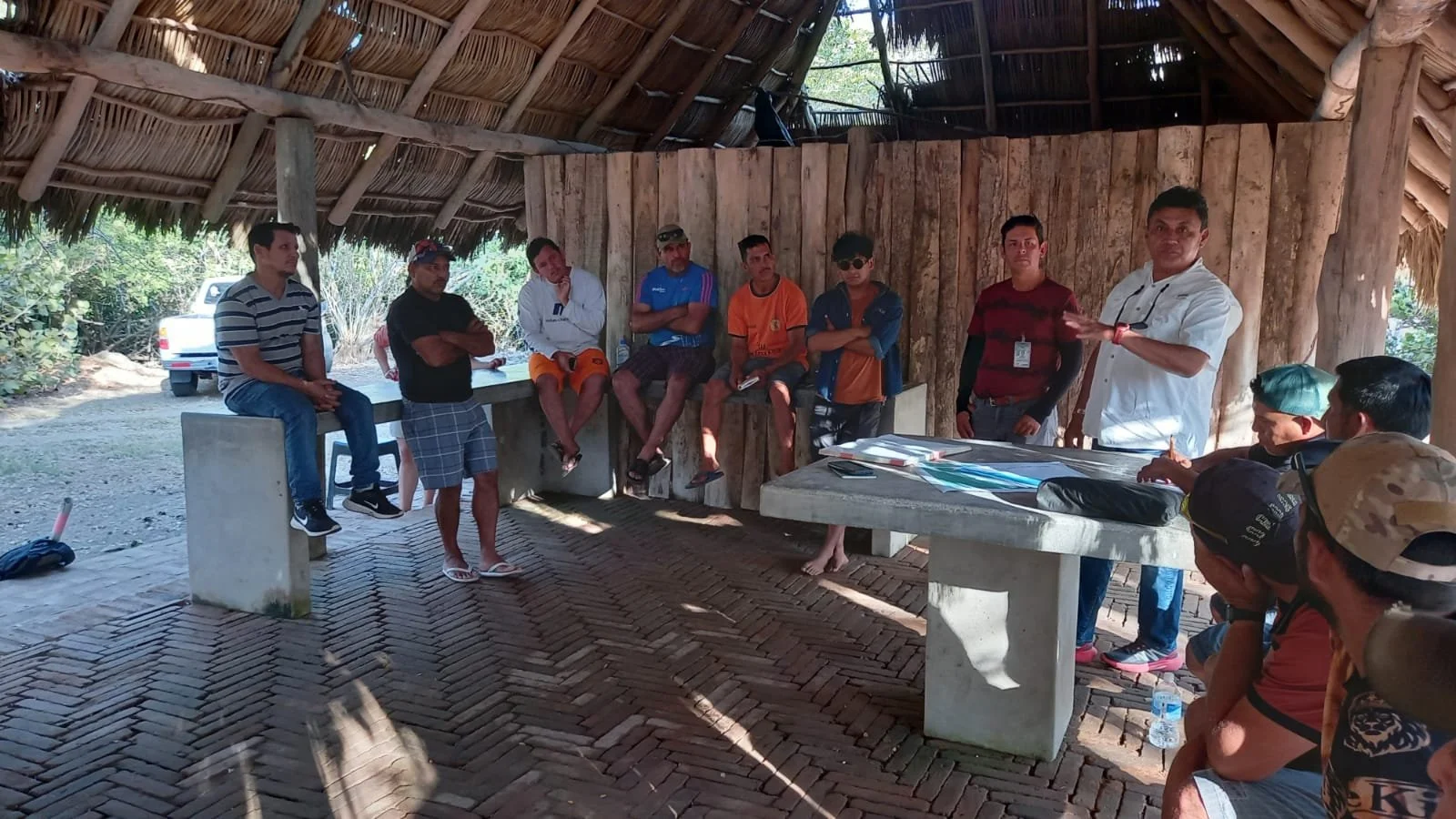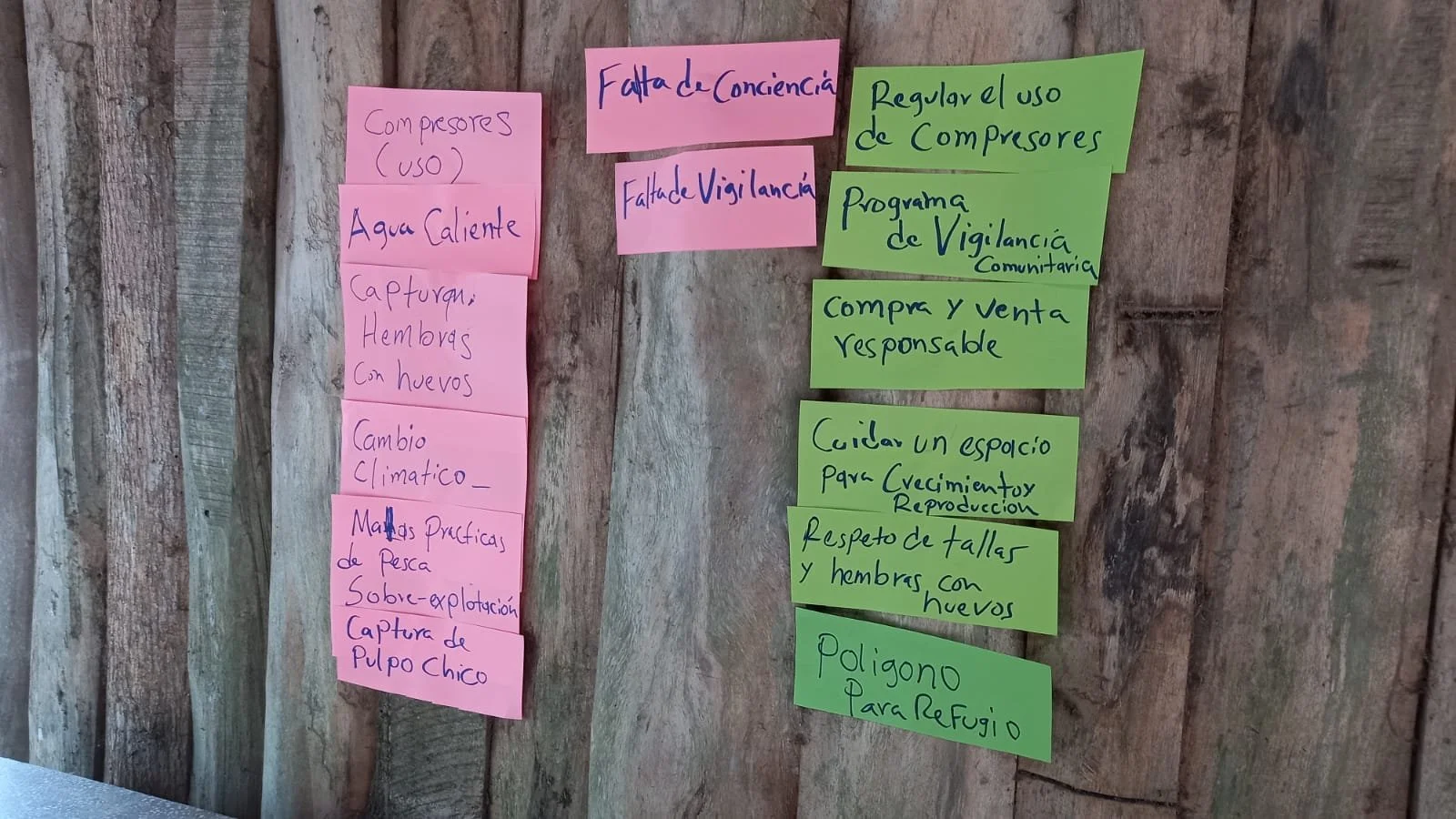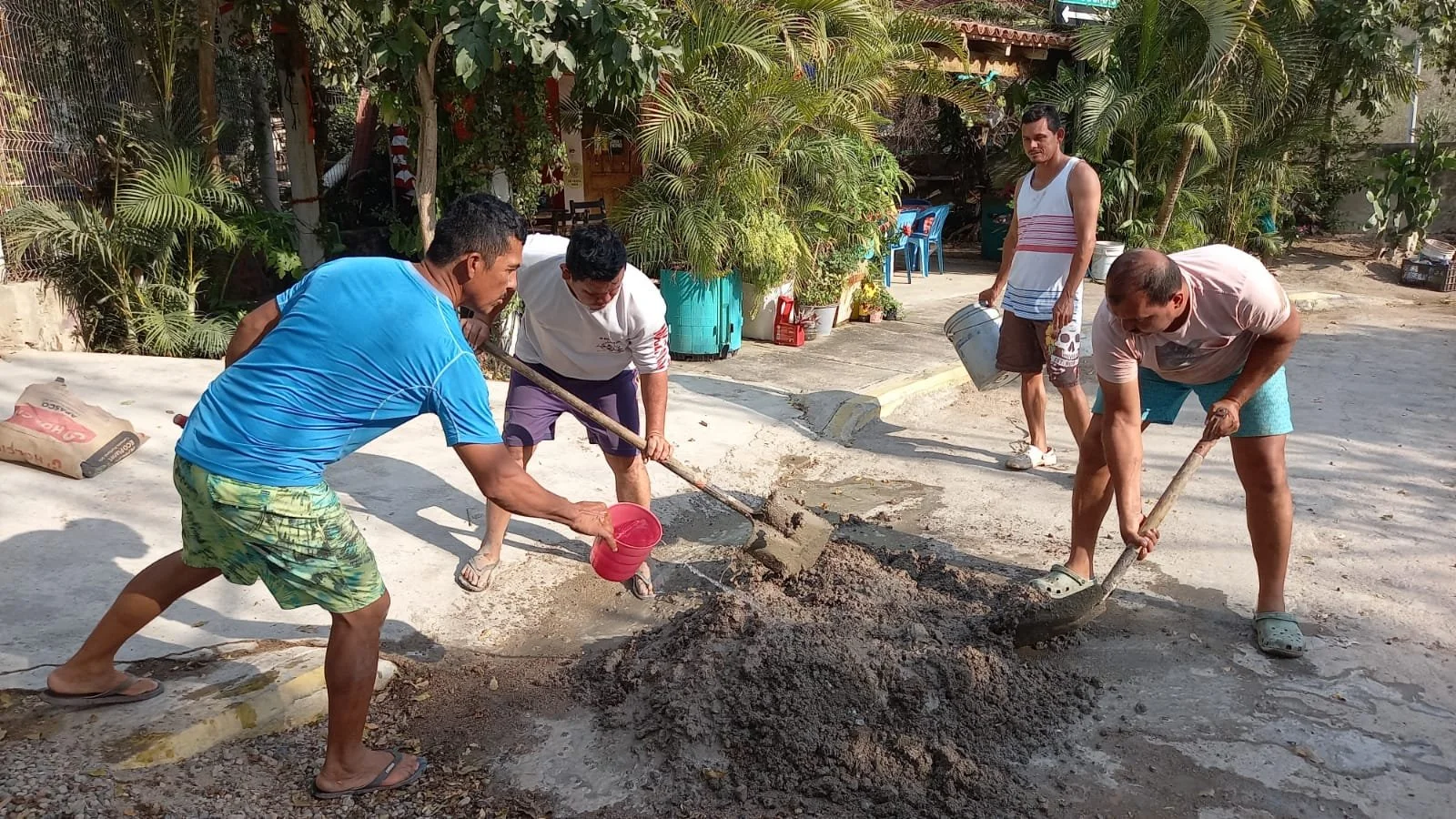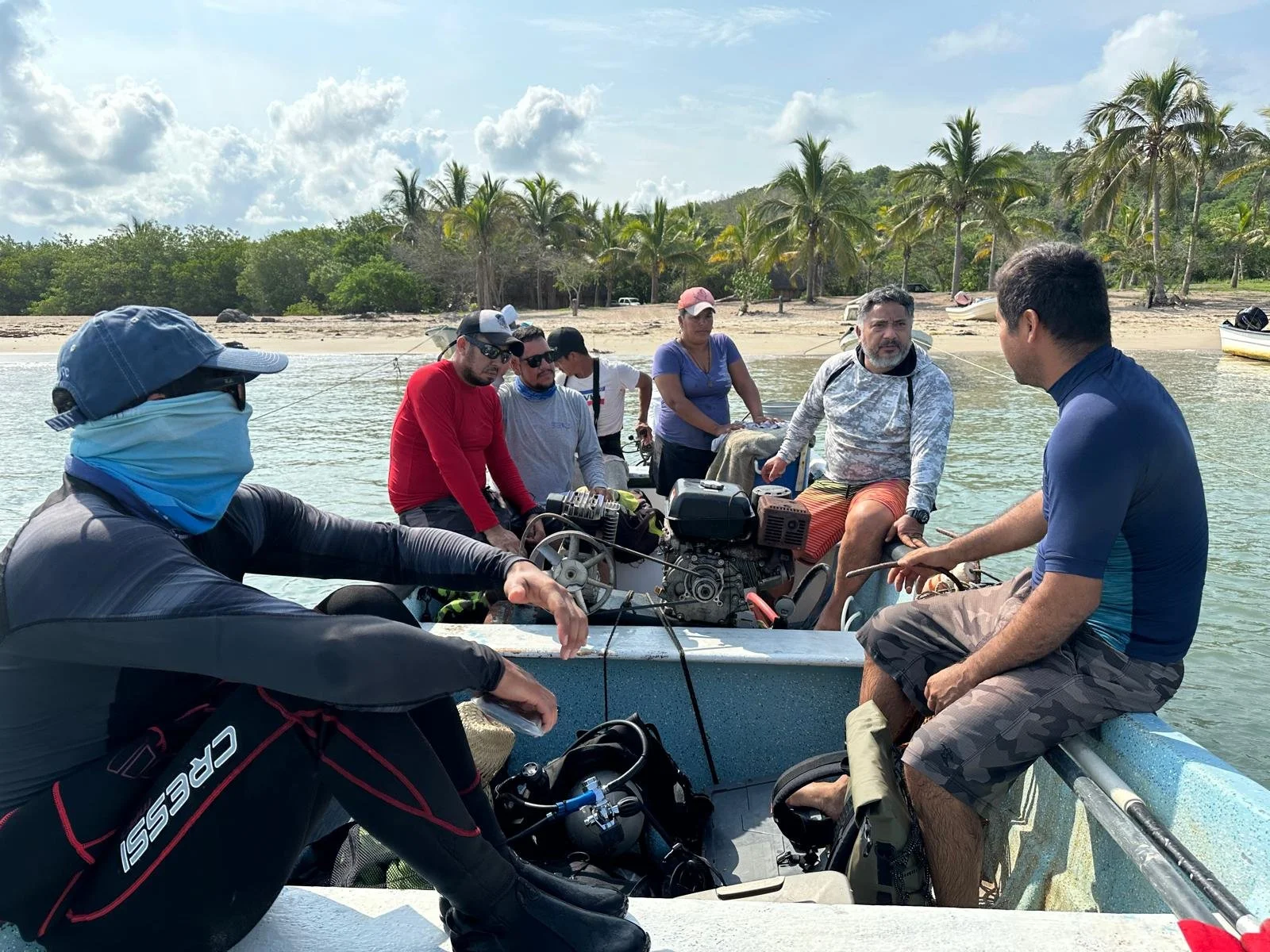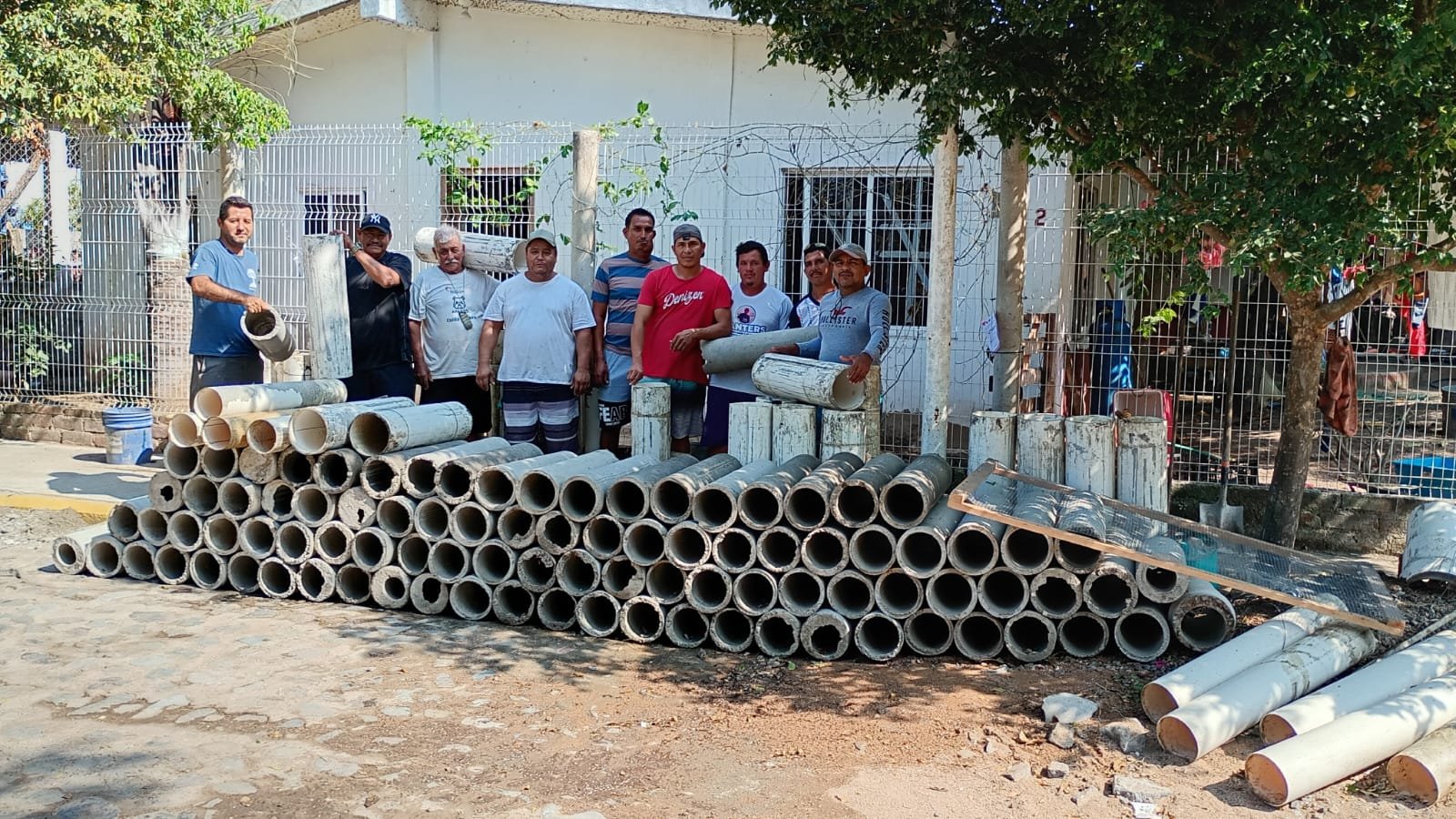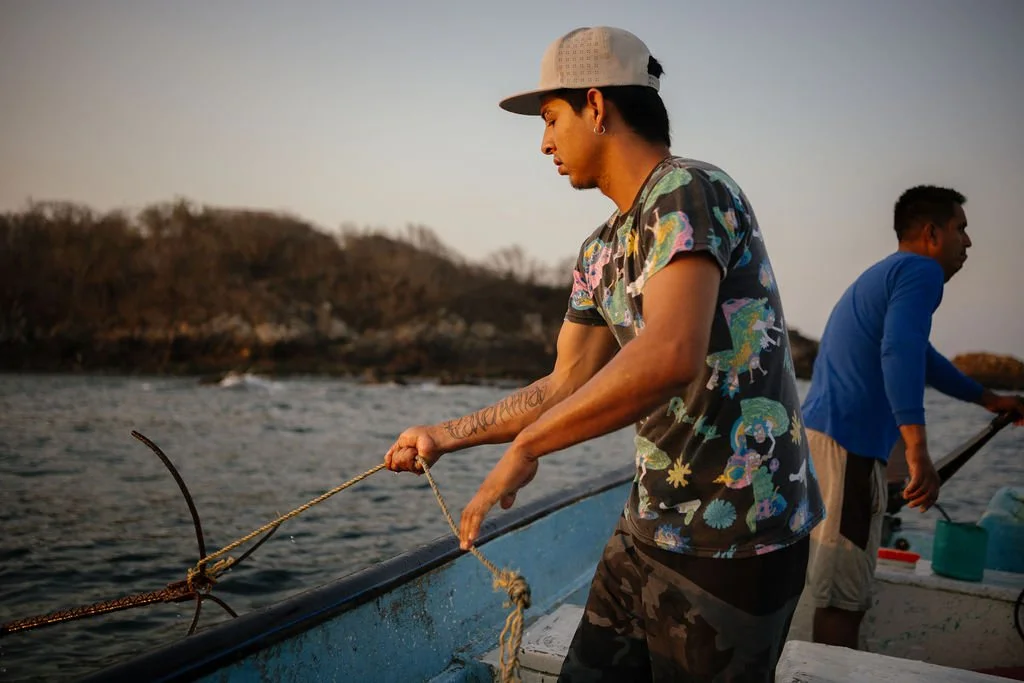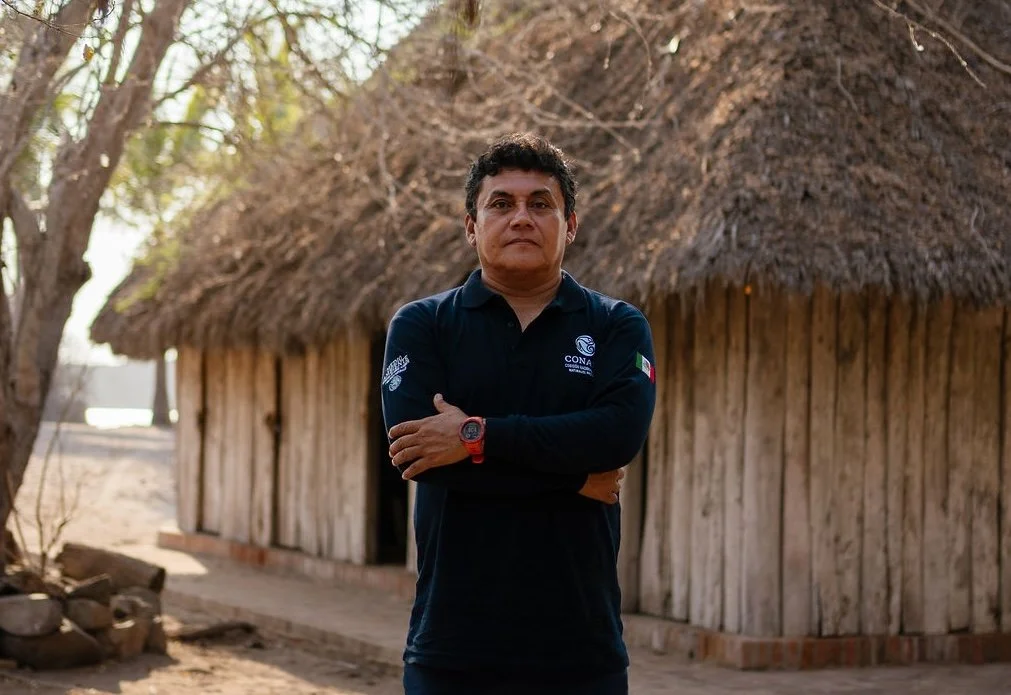Chamela Bay Fisheries Refuge
(Zona Refugio Pesquero)
The first refugio pesquero in Jalisco
Sierra A Mar is happy to announce an exemplary community-driven ocean conservation project underway in the Bay of Chamela – the first ZRP (Zona Refugio Pesquero), a fisheries refuge, on the coast of Costalegre. The establishment of such a designation is a long process and the first steps that have been taken over the past year are only the beginning. But what matters is that this is a project of true collaboration between communities, agencies, and conservation groups. It shows that stakeholders can get along and can enhance each other’s capabilities.
Recognizing the problem
The cooperative observed that its octopus fishery had declined significantly, affecting the economic income and generating concern about the future of the resource. In this context, at the end of 2023/early 2024, the Sierra a Mar initiative conducted a general assessment and held its first meeting with the members of the cooperative. This is when the collaboration between the community, Sierra A Mar, private stakeholders, and UNAM, represented through Adán Aranda-Fragoso, began with the goal of designing solutions to fisheries management issues in Chamela Bay.
The community
Chamela is a small coastal community located in the municipality of La Huerta, Jalisco made up of about 50 families.
The community's artisanal fishing activity is organized through a cooperative of 45 members (19 women/ 26 men). The most important fisheries are octopus and fish in general.
Making progress quickly
Since then, this teamwork has resulted in weekly meetings and expanded to include important institutions such as CONANP (Comisión Nacional de Areas Naturale Protegidas), IMIPAS (the Mexican Institute for Research in Sustainable Fisheries and Aquaculture), and SADER (Ministry of Agriculture and Rural Development).
From the outset, some members of the cooperative proposed protecting the islands of San Antonio and San Pancho to allow octopuses to reproduce. In the following months, proposals were discussed and socialized. Finally, in June an area was defined where no fishing of any kind would be allowed for the next five years. (Refugios are managed by 5-year intervals to allow adjustment of the location, expansion of the area, or changes in management, depending on the conditions observed).
In parallel, the collective also negotiated with SADER Jalisco, and IMIPAS to improve the seabed with octopus and lobster shelters made from ecological concrete (approved by SADER at the end of 2024). The cooperative members have since built 110 shelters.
Throughout the past year there have been workshops held to address issues such as the application, management, and community participation needs in a Fishing Refuge Zone, facilitated by IPCMX (Impacto Colectivo por la Pesca y Aguacultura Mexicanas).
2025 Progress
In early 2025, Sierra a Mar and the cooperative requested support from SADER Jalisco to carry out the Technical Justification Study, and in recent months the cooperative decided to voluntarily stop fishing in the ZRP zone, ahead of any formal designation and took the initiative to place buoys marking the boundaries of the area.
All along continued socialization of the proposal with fishermen from other neighboring cooperatives has been taking place. Sierra a Mar and UNAM generated infographics with details of the Fishing Refuge proposal to be carried on their boats, to be shown to fishermen arriving in the area.
In May 2025, Sierra a Mar and the cooperative organized a thorough cleanup within the proposed Fishing Refuge Zone. Most of the members participated, and friends from neighboring communities, the Alegre Scuba Republic team, and students from the University of Guadalajara also joined the event.
The event closed with a talk on risk management in diving given by Gilles Fortin of Alegre Scuba Republic.








